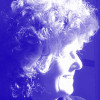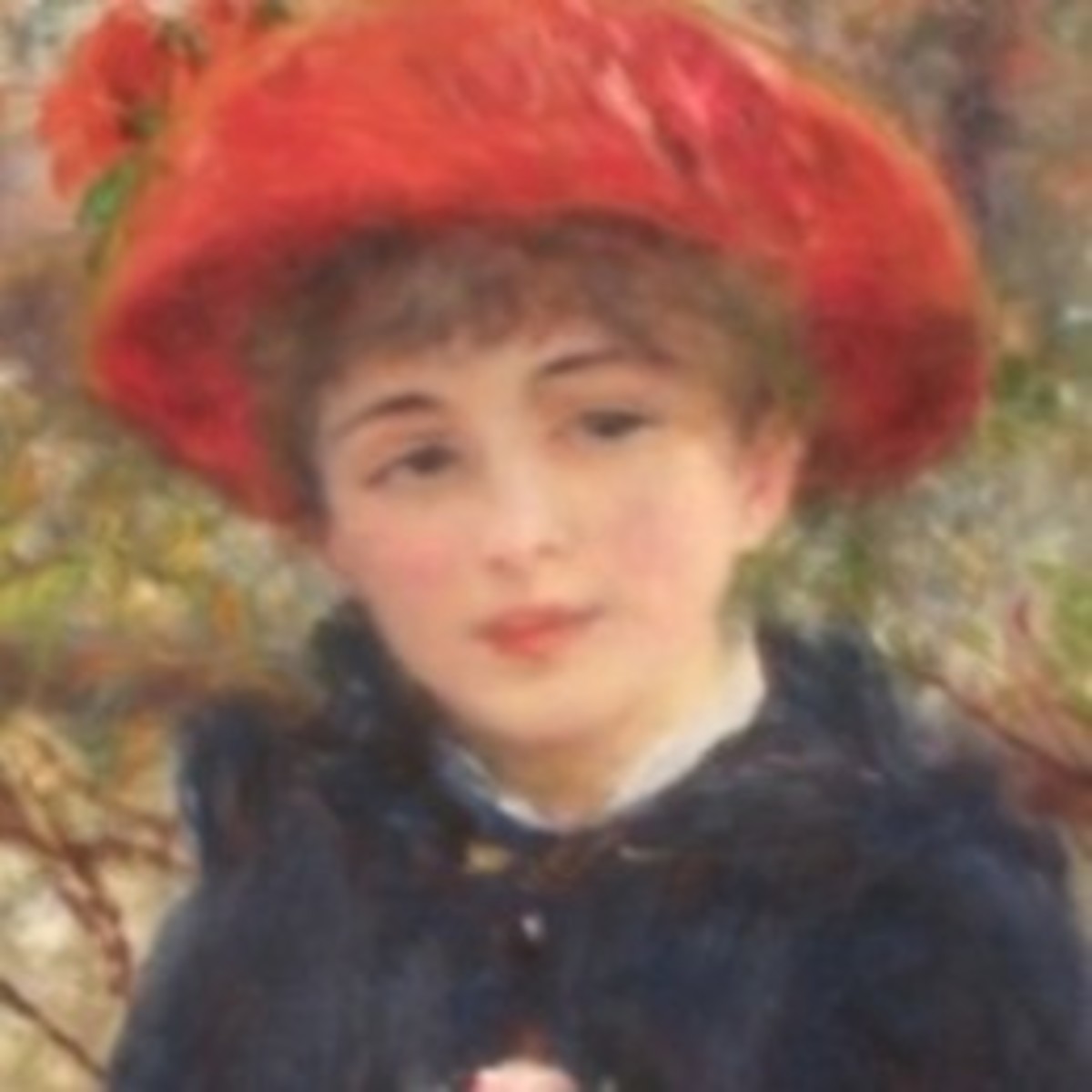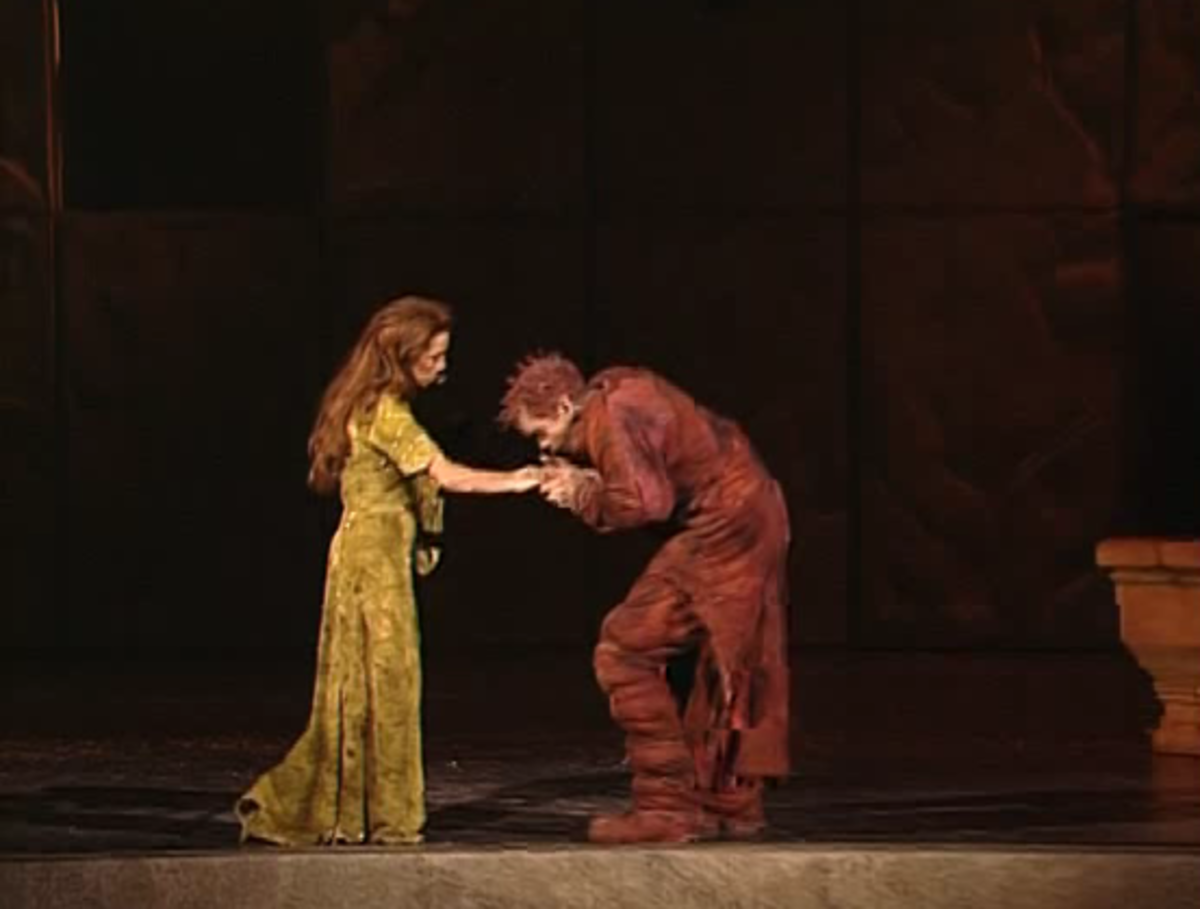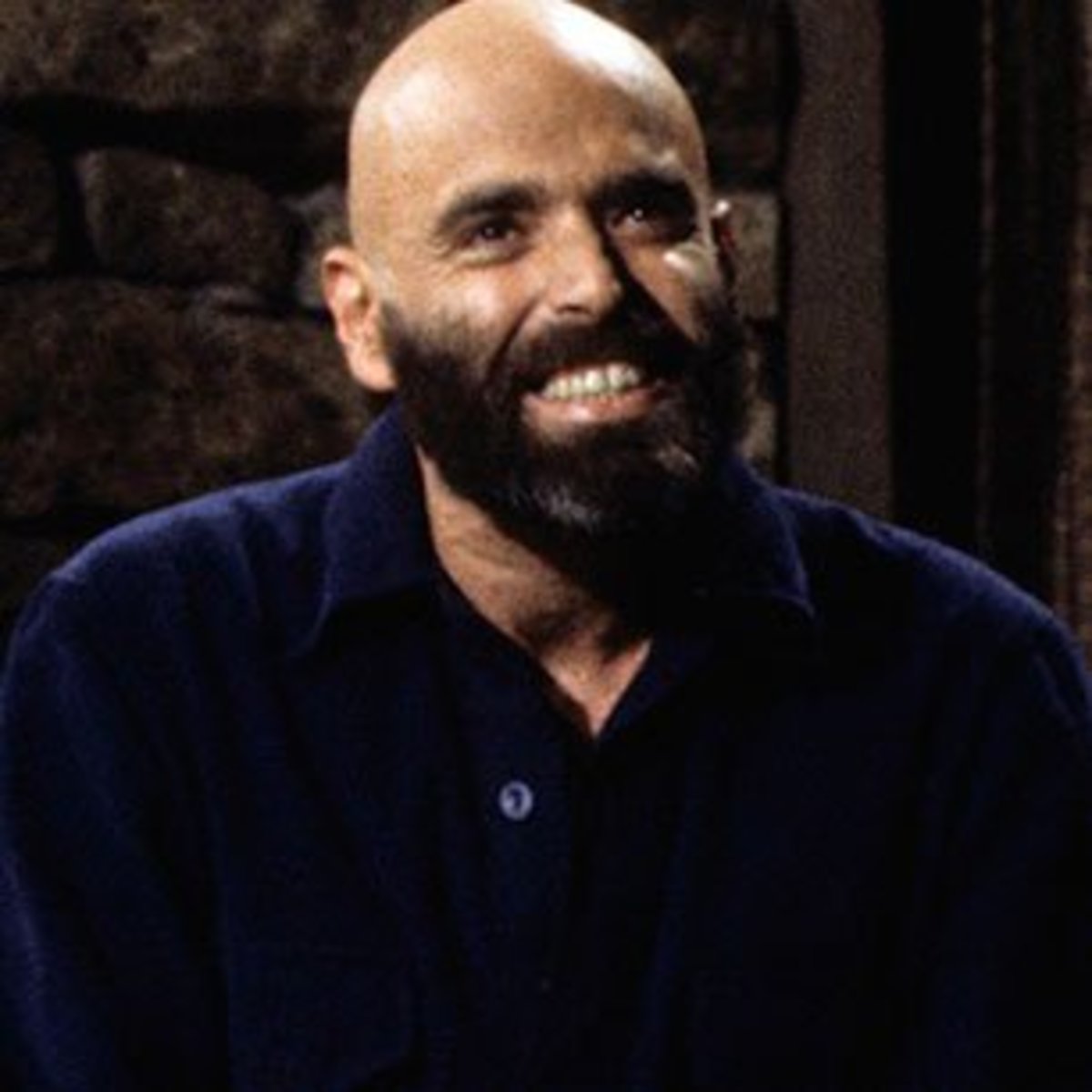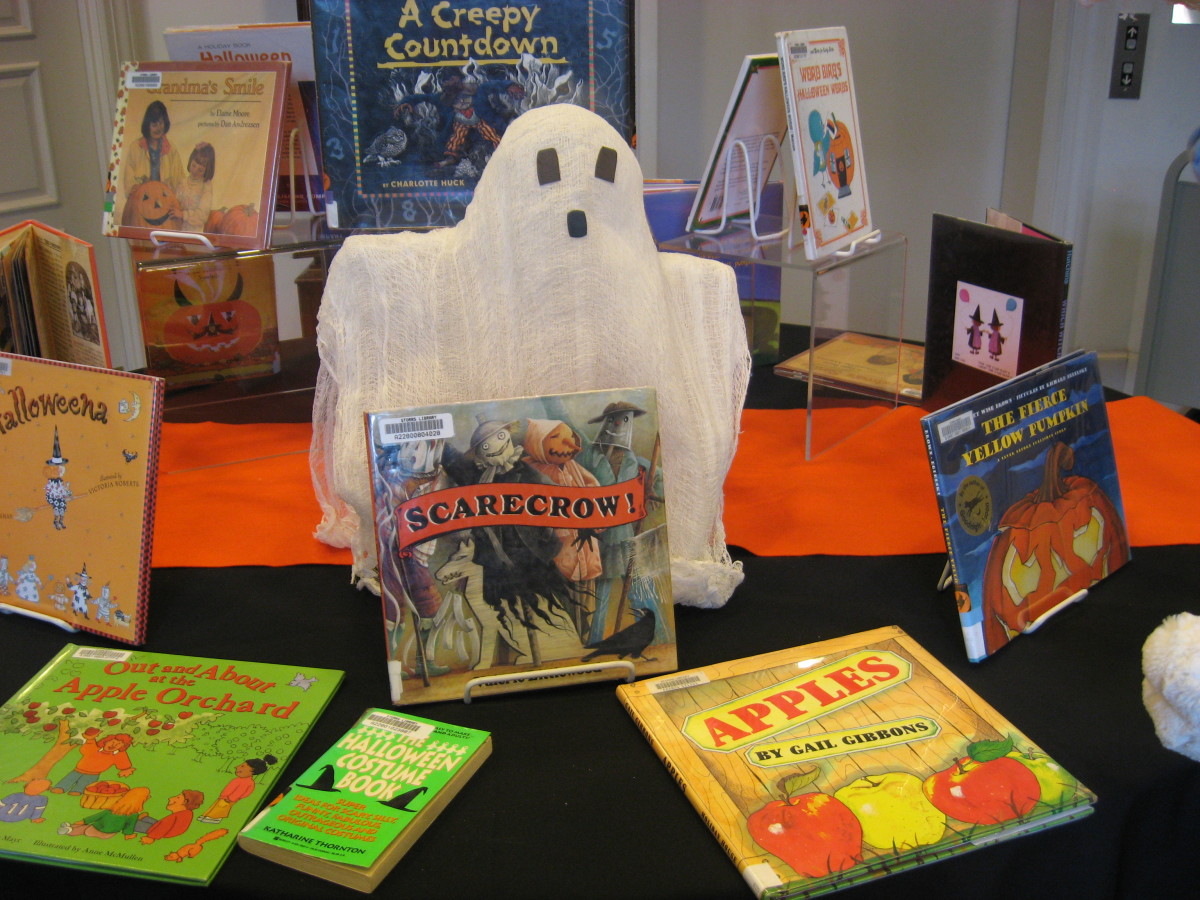The Hare With Amber Eyes
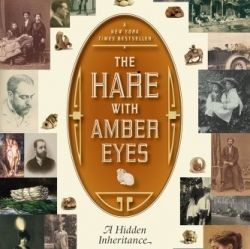
The Hare With Amber Eyes by Edmund de Waal
The hare with amber eyes is a netsuke, a small Japanese carving, and Edmund de Waal makes this tiny hare the starting point of an exploration of his family history. He begins a journey which takes him, both figuratively and literally, from Odessa, a city on the western borders of Imperial Russia, to Paris, Vienna, London and Tokyo.
The story begins with Charles Joachim Ephrussi (1793 - 1864) who made a fortune in the grain business and then sent his family, which became fabulously wealthy, all over Europe. Edmund is a potter and a writer and he takes pleasure in retracing the steps his family as they wove a path through the delights of the Belle Epoche and experienced the dark hatred of antisemitism and the Nazi invasion of Europe.
Perhaps because Edmund de Waal is an artist and a craftsman, he tells the story of his family through works of art. He takes a delight in this world of objects and images made at the moment the secret world of the east takes Paris by storm. A world of art dominated by painters like Degas, Monet and Van Gogh and writers like Prouste.
We begin the netsuke trail in Paris with Charles Ephrussi, Proust's model for Swann, and we are introduced to the beau monde of Paris in the second half of the nineteenth century are the people that the Ephrussi family would come to know - and to love.
Read The Hare with Amber Eyes - A Hidden Inheritance and follow Edmund de Waal into that world of exoticism, beauty, terror and delight ......
The Hare With Amber Eyes - By Edmund de Waal
When you open The Hare With Amber Eyes you are first confronted with a complex family tree going back for six generations: the Ephrussi family beginning with Charles Joachim Ephrussi.
Scanning the members of this family I am first struck by the breadth of their places of birth, and of their places of death, noting that they are often geographically dissimilar, and the range of names. Yes, there is Edmund, Anna and Thomas, but there is also Ignace, Viktor and Jiro. They come from, or met their demise in Vienna, Tokyo, Lemberg, Mexico, Berdichev, Brody, Paris, Odessa, Shizuoka, Amsterdam, London, Nottingham and Cambridge.
My mouth begins to water for more information about a family who flit around the world over.

The Preface
Edmund de Waal begins his story in 1991
Edmund de Waal begins by telling us that in 1991 he was given a two-year scholarship by a Japanese foundation so that he could learn the Japanese language and they spend a year in Tokyo. He describes his classes in Tokyo, the cinnamon buns he would eat en route to school, the ceramics studio where he made pots and gives us an introduction to his passion for pottery which began in his childhood.
De Waal was a devotee of and apprentice to the English potter Bernard Leach who himself was a lover of the pottery produced in Japan. At the time of his trip to Japan, de Waal was writing a book about Leach - bringing together his love of ceramics and writing.
De Waal and the netsuke collection
We are told how Edmund finished his apprencitceship in pottery, studied English at university, produced pots in studios on the borders of Wales.
In Tokyo Edmund worked on his book in the Japanese Folk Crafts Museum which houses a collection of Japanese crafts brought together by Yangi Soetsu. Soetsu and Leach had been friends, both passionate about Blake, Rodin, Whitman and John Ruskin.
In the preface, we are also introduced to de Waal's great-uncle Iggie (Ignace) who, very conveniently, lived close by. On these afternoons Uncle Iggie would show Edmund his collection of netsuke - little ivory figurines - taking them from the glass vitrine one by one. Edmund remembers the tales of the family country house, Kvecses in what is now Czechoslovakia, how the family traveled on the Orient Express.
We are also introduced to the netsuke. The netsuke were bought by a cousin, of de Waal's great-grandfather, Charles Ephrussi in the 1870's in Paris and given to Iggie's mother and father as a wedding present. It is a collectio of 264 little wooden objects carved from ivory or wood and it is around these objects that Edmund de Waal decides to build a family history. I'll return to the netsuke later on.
Edmund begins to bring together the threads of his family history - the time his grandmother Elisabeth met Charles at the Chalet Ephrussi in Meggen, Switzerland. His father helps with a sparse cache of photos, documentation and a pile of books by Thomas Mann 'with inscriptions'.
So Edmund makes as start with the Paris address of Charles Ephrussi and the climb up through the branches of the family tree begins.
The Exiles Return by Elisabeth de Waal
Edmund de Waal has become the archivist for his family and amongst the papers de Waal has found completed novels written by his marvellous grandmother, Elisabeth. Having grown up in Vienna, and escaped Hitler's onslaught in 1938 Elisabeth de Waal lived to tell the tale, but her novel lay, typed but unpublished until now. Seventy-five years later The Exiles Return is the story of five exiles who return to Vienna after World War II.
A must-read for all of us who loved The Hare With Amber Eyes
Elisabeth de Waal, as you'll see if you read her grandson's account of the family history, was a most remarkable woman. Born into the fabulously wealthy Ephrussi family, she had to fight for her education, but eventually became one of the few women attending the University of Vienna. She could speak several languages and showed the most amazing courage during the war. A heroine in every sense of the word. I can't wait to read her book.
What Are Netsuke?
Toggles!
Netsuke are little, carved toggles originally designed to keep sagemono, pouches or boxes closed.
These little sculptures were first invented in 17th-century in Japan and came about because the traditional robes, kimonos didn't have pockets. So little pouches or boxes were used to contain all those little things that gentlemen needed. These pouches were tied from the waistbands by cords and were closed by Netsuke
Over time these toggles evolved into tiny works of art at their peak in the Edo period around 1615-1868.
Edmund de Waal Talks About The Hare With the Amber Eyes
See The Work of Edmund de Waal, Netsuke and The Hare With Amber Eyes
This website is so beautiful, monochromatic and peaceful. The white ceramics made by Edmund de Waal, the carved ivory netuke, and pages of text set against cool-toned colours.
- Edmund de Waal's Website
See the netsuke collection but also the wonderful ceramics of Edmund de Waal
Edmund de Waal and His Journey of Family Discovery
Paris 1871 - 1899
Charles Ephrussi, the model for Proust's Swann, once settled in Paris set out to collect art. In the salons of Paris, notably the Thursday salon of Mme Lemaire, where 'society and art intersect' he met the rich and beautiful Louise Cahen d'Anvers. They became lovers and together they scoured Paris for Japanese works of art. Black-and-gold laquer boxes at first, but it is a trail that leads to the collection of the netsuke.
The rage that took hold of Paris for all things Japanese manifested itself in the work of the painters at the time - notably Monet and the Impressionists, Van Gogh, Gauguin and the Post Impressionists. The Japanese prints, along with photography and the building of the modern world transformed the way artists perceived and recorded their enviromnents.
Katsushika Hokusai The Studio of Netsuke Art
The influence of Japanese prints
Japanese prints such as this one by Hokusai which depicts a netsuke studio, introduced artists to another way of seeing. To a flat and decorative world described in sinuous line, flat areas of, often bright, colour and little mathematical perspective. A floating world of shape and pattern.
In the famous picture of Monet's Bridge in his garden in Giverny you can see two aspects of this influence. One, superficial - the building a a Japanese-style bridge in the gardens, but the other much more subtle. In this image the bridge becomes pattern, there is little sense of depth, the brilliant colours float. Monet is describing the floating world in the outskirts of Paris.
La Japonaise by Claude Monet - Camille Monet wearing a Japanese kimono
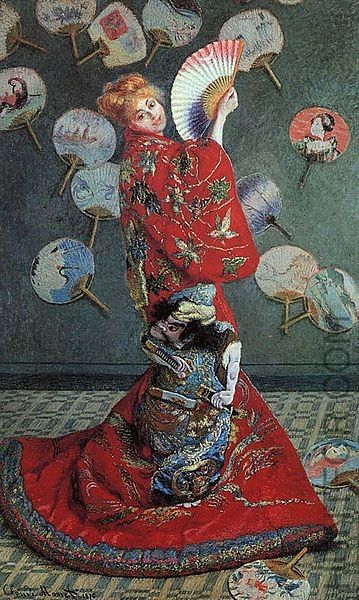
Charles Ephrussi Lived in Paris - No. 81 rue de Monceau In 1899 Charles moved to Number 11 avenue d'Idena, Paris.
This painting by Monet shows the collector's view of Japonisme. De Waal cites this painting as an example of how the art world seized upon the objects flowing into Paris from Japan and used them to inform their own world. He tells us that Mme Monet's robe had emroidery so rich that in places it was several centimeters thick. In the background you can see the sort of fans that I used to buy in Liberty's in London to draw and paint myself when I was an art student.
Charles Ephrussi's first Paris House
Charles Ephrussi Collected the Work of Manet, Monet and the Impressionists
He was at the very centre of the Parisian world of art
Charles became a collector of the very best contemporary art at the time, became the editor of the Gazette encouraging art reviews, emplyed the poet Jules Laforgue as his secretary, Degas painted the Ephrussi family racehorses, Constantin Guys and Manet painted his portrait, knew Edmond Duranty and owned the wonderful pastel drawing of Duranty by Degas.
He began his collection of Impressionist paintings with Berthe Morisot, then went on to collect work by Mary Cassatt, Degas, Manet, Monet, Sisley, Pissarro and Renoir - all the Impressionists greats. He bought Manet's painting of a bunch of asparagus at such a good price that Manet painted another work, this time with one aparagus shoot only and presented it to him.
Charles Ephrussi and Albert Durer
Charles was also writing a book about the German artist Albert Durer entitled Albert Durer et ses dessins (Albert Durer and his Drawings). Durer was, of course famous for his depiction of a hare.
Charles Ephrussi Moves Away From the Impressionists
Towards Aestheticism and Symbolism
As Japanese artifacts flood Paris so the appetite for Japonisme amongst the cognoscenti wanes. It becomes pass. Charles turns his back on Japan, but also on the Impressionist paintings that he had collected so avidly. De Waal introduces us to the people in this painting by Renoir, but I'll leave you to read about it for yourselves, save to point out that the man in black, wearing a top hat when all around are colourfully casual, is Charles Ephrussi - patron and yet outsider.
Charles Ephrussi and Gustave Moreau
Charles turns from the fresh air paintings of the Impressionists to the suffocating sensuousness of the symbolists. He bought two works by Gustave Moreau whose work was described by De Goncourt as 'watercolours of a poet goldsmith'. Moreau's work also appears in the novel A Rebours by Huysmans, the golden, bejeweled images appealing to the aesthete hero Des Esseintes. Thus Charles passes into the shady world of Oscar Wild and Beardsley. "It is 'Jew Art' Renoir writes ..;"
The Dreyfus Affair
And the rise of anti-Semitism in France
Life changes significantly for Charles Ephrussi. always regarded as a jew and a foreigner (the Ephrussi still retained their Russian nationality, the atmosphere began to change and move against the jews in France. At this time Charles changed his collecting tastes from the exotic to the indiginous as taste turned from Japan to the France of the 18th century, to Meissen, the Empire to Boucher and Watteau.
1894 saw the start of the Dreyfus Affair. Alfred Drefus was a Jewish officer on the French General Staff and was accused of spying for Germany on the grounds of trumped-up evidence. Sides were taken by everyone and many of the biggest names in the art world showed the hidden, unattractive sides of their characters. Others, like Emile Zola, railed against the injustice and was forced to flee to England
The Ephrussi family, despite weilding incredible power on the world stage, were subjected to daily racist humiliations.
Hapily perhaps for Charles, he was to die young in 1905, but before he died he sent a very special wedding gift to his cousin Viktor von Ephrussi who had recently taken a house, the Palace Ephrussi on the Ringstrasse, Vienna. He sent him a collection of 264 netsuke.
Viktor Ephrussi Married Emmy
Growing anti-Semitism in Vienna
Viktor and Emmy moved into the fabulous Palais Ephrussi, built by De Waal's great-great-grandfather Ignance von Ephrussi, Viktor's father, on the Ringstrasse, Vienna. It was a house that de Waal describes as making Charles' house in Paris look demure. Designed by Theophilus Hansen, it was all doric columns, caryatids and gold. It took it's place in the new, modern Vienna that came into being on the orders of the Emperor Franz Josef - a Vienna of wide avenues, parks and open spaces.
Despite the beauty and grandeur of this new city, all was not well and there was an increasing disquiet about the gowth in numbers and influence of the Jewish community. Ignance von Ephrussi was the second richest banker in Vienna and the Jewish population were growing ever more powerful and, to the consternation of some, more invisible.
De Waal tells us that when Viktor arrived in Vienna aged three there were fewer than 8,000 Jews in Vienna but by the time Viktor and Emmy were married in 1899, there were 145,000 Jews in Vienna. They also weilded great power as a group. They dominated 'all public life' - the banks, the press, the theatre, literature and social organisations. We are given some startling statistics. 'Anti-Semitism was part of common day-to-day life'.
An Idyllic Life in Vienna
The life of Viktor and Emmy sounds idyllic - on the surface at least. Viktor proposes to Emmy the daughter of a friend, when he is nearing forty and she has just turned seventeen. They (Viktor and Emmy or just Emmy alone) spend only a few months of every year in their Viennese palace, flitting from Paris in April to stay with friends in Schloss Jaidhof about fifty miles from Vienna in July, August find them in Switzerland, September and October is spent in Kovecses, the country home of Emmy's family and in December they are in Vienna.
Emmy at least took lovers, a common occurrence it seems at the time. The florid sex lives of the Ephrussi family is touched on lightly by de Waal. He also describes life in the country houses where hunting was the passion of both men and women - women, it seems, were surprisingly free and active, at least to some extent.
The descriptions of the houses are vivid and paint a picture of gaudy sumptousness. In the Vienna house they dine on golden plates, enjoy wonderful paintings, gorgeous furniture and spend much time dressing. It is in Emmy's dressing room that Edmund de Waal finds the netsuke collection has been kept. The children of Emmy and Viktor would spend time with their mother while she dressed for dinner and they would play with the items from the netsuke collection.
The First World War and Financial Disaster
We are in the time of the Secession, of Gustave Klimpt (Emmy disliked him and thought him rude) and of Egon Schiele. There is growing feeling against the Jewish population in Austria and when Austria declared war on Serbia on 28 July 1914 Emmy and the children were in Kvecses. She has to use her connections to get the family back to Vienna.
The war was a frightening time, a time of food shortages, queues and financial turmoil. The Ephrussi family were distributed throughout Europe in France, Austria, Switzerland and England. Viktor decided not to deposit his fortune in Switzerland, deeming it to be anti-patriotic. This proved to be catastrophic.
In the meantime, Elisabeth, eldest daughter to Viktor and Emmy, was one of the few women to be admitted into the University at Vienna and the first woman to graduate in Law. She married a Dutchman and moved to an apartment in rue Spontini, Paris, which she proceeded to furnish with new, modern furniture, including a landscape by Egon Schiele.
The Nazi Reich, Hollywood and Dark Times
"To be a Jewish banker in Germany in the Depression was unwise." Iggie ran away from Austria and away from banking. Hitler's popularity was on the rise and Iggie went to Paris and began to train for a career in fashion. After nine months, at the age of 28 he travels to New York and from there to Hollywood. He designed clothes and accessories for Dorothy Couteaur Inc. (According to de Waal - a name straight out of Nabokov).
Elisabeth, de Waal's grandmother, was feeling the financial pinch in Paris and took her children to live in a farmhousein Oberbozen in the Italian Tyrol; from there she moved to the Swiss Alps. Her sister, Gisela and family moved from Madrid to Mexico because of the Spanish civil war. The Ephrussi family were on the move.
The bank is doing better now and Viktor has started to collect 'incunabula', early printed books but then in July 1934 Chancellor Dollfuss was assassinated in an attempted coup by the Austrian SS.
On the 11th March 1938, despite massive financial support from the IKG (Israelitische Kultusgemeinde), the Austrian Chancellor, Schuschnigg announces that he is stepping downin favour of a candidate chosen by the Reich Government. He ends his address "God protect Austria."
Uprising immediately ensued. The Palace Ephrussi was attacked and ransacked. Items were looted before the very eyes of the family.
The netsuke were saved.
Ephrussi Palace in 1888 - It was seized by the Nazi Party in 1938
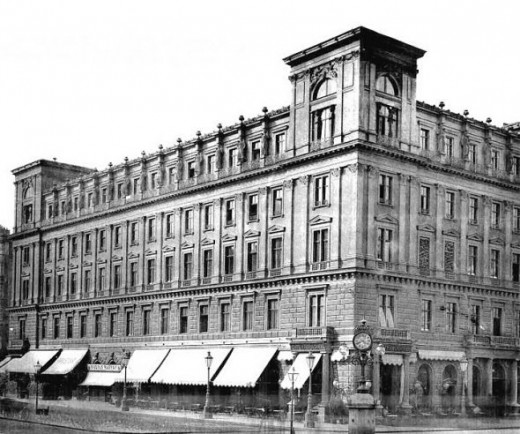
The Ephrussi Family Are On The Move
Shocking Events in Vienna
But I won't spoil the plot
The turn of events as Hitler moves into Vienna is truly shocking. I am up half the night reading about it with painful fascination. How could this happen?
I won't tell you about it - you have to read the book - I'll just stick with some of the art background. I will say however, that there are all the elements here - terror, violence, pathos, politics, wealth, injustice, nail-biting suspense and a great heroine.
I can't wait for the film of the book.
The property of the Jewish population of Vienna was stolen from them. Hitler, you remember, was an artist. The Nazi party gathered together the art objects and put them into museums, appropriated them or sold them to raise funds for the Reich. This was decided by Hitler - "The Fhrer plans to personally decide ..." Some went to local galleries, some to the Kunsthistorisches Museum, and some were ear-marked for a new museum that Hitler planned for Linz - his place of birth.
Watch 'The Train' Staring Burt Lancaster - The French foil an attempt by the Nazi's to remove art works
The process of collecting art works and shipping them to Germany is graphically and powerfully shown in the film The Train, directed by John Frankenheimer in 1964.
Beautifully shot in black-and-white film from a story and screenplay by Franklin Coen and Frank Davis the film is based on the non-fiction book Le front de l'art by Rose Valland. The film is set in France in August 1944 when French Resistance-member Labiche played by Burt Lancaster) tries to foil German Colonel von Waldheim's plans to ship stolen art to Germany.
The Train [Region 2]
Languages - German, English and French with subtitles in French, Dutch, Swedish, Norwegian, Danish, Greek, Portuguese
Subtitles for the Hearing Impaired in German, English
Run Time: 133 minutes
Average Customer Review: 4.6 out of 5 stars At Amazon.com
Pink and Blue by Renoir
Pink and Blue is a painting by Renoir of the daughters of Charles Ephrussi's mistress in Paris, Louise Cahen d'Anvers. The little girl in blue had been deported and had died in Auschwitz. Louise's house in Paris had been used by the Nazis as one of their detention camps. Other friendsof the Ephrussi family had also died in Auschwitz in 1944 - Fanny and Theodore Reinach's son Leon and his wife and two children.
The Ephrussi family did not return to Austria. De Waal tells us that at the time of the Anschluss there were 185,000 Jews in Austria. 65,459 had been killed and 4,500 returned.
"Nobody was called to account."
Tokyo 1947 - 2001 - A hare with amber eyes and the netsuke come home
Ignace Ephrussi in Tokyo
The story comes full circle
I will not tell you what became of all the members of the Ephrussi family, nor how the netsuke collection was saved - it would spoil this thrilling mystery - you must read the book yourself, but I can tell you, because the book begins with Iggie in Tokyo, that Edmund de Waal's Uncle Iggie, after serving in the war, took the netsuke back to their original homes in Japan.
There is something very satisfying about a story that comes full-circle, and it is so much more satisfying when the story is true. Even more satisfying if I tell you that it wasn't so much Iggie bringing the netsuke to Tokyo, as the netuke bringing Iggie. Once established in Tokyo, Iggie learned to speak Japanese and built up a thriving business. Ignace begins to collect Japanese art objects - and he's not alone.
Post-war Japan brings us full circle and back to art collecting. Japan becomes a 'country to plunder' when the Americans and other foreigners combed the country for works of art and heirlooms that the local people were forced sell. Treasures could be picked up for a song.
Odessa and After
Edmund DeWaal finally visits Odessa to find out why his ancestors left Russia in the first place. The answer? Dust!
He looks forward to coming close to the Black Sea, where the family fortune had first been made - trading grain. Edmund and brother Thomas drive to the Primorsky Boulevard and the Hotel Londonskya - the oldest hotel in Odessa.
Past the hotel to the Potempkin steps - featured in The Battleship Potemkin by Einstein.
Beatrice Ephrussi Rothschild and the Faberge egg
Near the Hotel de Ville is the Ephrussi Bank and next door is the family house where Jules, Ignace and Charles were born - in the process of being gutted for rebuilding. Despite the state of the buildings, de Waal finds clues to his past. Edmund is told that Gorky collected netsuke.
This is where the family changed their Jewish names. Name-changing - the final insult or a concerted effort to assimilate?
One interesting little fact that de Waal almost throws away is that he has a newspaper clipping from a recent paper recounting the fact that a Faberge egg which was commissioned by Beatrice Ephrussi Rothschild had been sold and brought the highest price ever for a Russian object bought at action. It was pink and gold and opened to reveal a diamond-studded cockerel inside. It was sold by Christie's auction house on November 28, 2007, for 8.9 million (including commission)
Read more about Faberge eggs and Limousin porcelain eggs Faberge eggs and Limousin porcelain eggs.
Yellow, gold and red
These are the colours that Edmund de Waal leaves with us.
De Waal Describes His Netsuke Collection in The Hare With the Amber Eyes
Objects of desire
In the preface de Waal describes how he 'carried around' (he says the netsuke are too light to warrant this description) a netsuke in the from of a 'ripe medlar fruit' made from chestnut wood and made in the late eighteenth century in Edo. he desribes in detail how the medlar netsuke feels, how it is rubbed by the fingers. Netsuke are tactile objects.
Many netsuke are also erotic and popular subjects would be octopuses and girls, monkeys with mushrooms and open persimmon fruits. Small, beautiful, erotic and exotic - no wonder the windows of the art collectors of Paris displayed nesuke. And it was in this way that Charles made his purchase of 264 of thes little 'objects of desire' from Sichel in the 1870's.
De Waal spends quite some time describing how the children of Viktor and Emmy Ephrussi would play with the netsuke. He describes the Japanese dancer, the snarling wolfn the bundle of twigs, the beggar with his begging bowl, the dried fish, the rats, the mad old man, the brown medlar made of wood and the gleaming white ivory deer. There was a dog with pups, tigers, a mussel shell with a naked man and woman inside, a boy trapped inside a bell by a long-haired witch-snake.
The netsuke are playthings in Vienna but are fast becoming collectors items in Europe - auctions in the Hotel Drouot and exibitions in the Maison de l'Arte Nouveau run by Siegfried Bing are bringing high prices including Edmond de Goncourt's the collection of a 140 netsuke. De Waal tells us that the first German history of the netsuke, complete was published in Leipzig in 1905.
De Waal ejoys the tactile qualities of the netuske. He 'tumbles' the pale-brown netuke of three chestnuts with an ivory grub - like worry beads. He takes pleasure in the fox with inlaid eyes, the monkey and gourd, the 'brindled wolf'.
Iggie catalogues the netsuke collection
It was in Tokyo in the 1970s that Iggie began to number and catalogue the netsuke collection. He had them valued and found them to be very sought-after - especially the tiger. Individual craftsmen are identified, along with their histories. De Waal describes the pile of little tortoise with a slippery surface and he describes the tedious, important and complicated method of polishing the netsuke.
The tiger with 'yellow-horn inlaid eyes', it turns out, was carved by Toyozaku of the Tamba school renown for the fluid animals he created from dense boxwood. DeWaal rubs the tiger with yellow-horn inlaid eyes.
Japanese Netsuke: (Far Eastern Series / Victoria and Albert Museum) - by Julia Hutt and Edmund De Waal
I've found this story about netsuke fascinating and it's left me wanted to know more about these tiny, beautiful, funny and intensely personal little carvings. This is the book to do just that.
Books by Edmund de Waal About Porcelain ... - ... and ceramics
De Waal is pricipally a potter but his work is of such beauty that it has passed from the world of craft to the world of fine art. De Waal is also author of several text books about ceramics. Here is a selection of some of these books:
- The Pot Book
- 20th Century Ceramics (World of Art)
- St. Ives Artists: Bernard Leach
- Bernard Leach Saiko (Rethink Bernard Leach)
- New Ceramic Design
De Waal's latest book - The White Road: a pilgrimage of sorts
Published on 24th September 2015, this book was serialized on BBC Radio 4 shortly afterwards. It is a fascinating account of the discovery and history of porcelain. I live in Limousin, famous for porcelain production, so I have gleaned a basic knowledge of this beautiful and strong material, but I learnt so much more from this book. A must-have and definitely on my reading list.
Links to the World of Edmund de Waal, Netsuke and the Hare With Amber Eyes
- Grains of Truth
Images of some of De Waal's collection of netsuke
Villa Ephrussi de Rothschild - At Saint-Jean-Cap-Ferrat
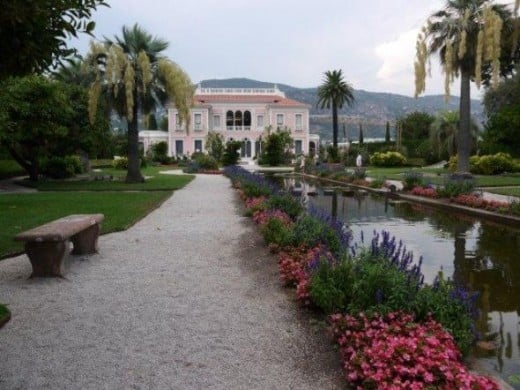
La Villa Ile de France, or Villa Ephrussi de Rothschild on the Saint-Jean-Cap-Ferrat peninsula, is a palace built by Beatrice Ephrussi de Rothschild is one of the most beautiful on the Cte d’Azur. The villa is built right on the coast and romantically looks out over the sea with the mountains behind it. It is beautifully decorated and houses her collections of artifacts and collection of Sevres porcelain.
The nine magnificent gardens which surround it take inspiration from the Alhambra in Spain.
Where Did I Get My Information? - Links to my sources
- EDMUND DE WAAL'S UNFINISHED BUSINESS
The Economist - an excellent site with some good images - Edmund de Waal on BBC Radio 4
De Waal chooses his Desert Island Discs - That's how the light gets in
Article / review of The Hare With Amber Eyes
Have You Read The Hare With Amber Eyes? - What did you think?
Did You Enjoy The Hare With Amber Eyes?
© 2012 Barbara Walton
